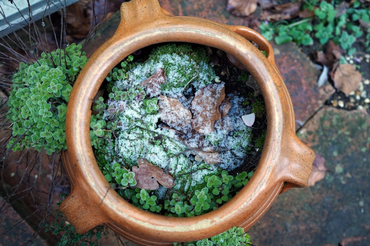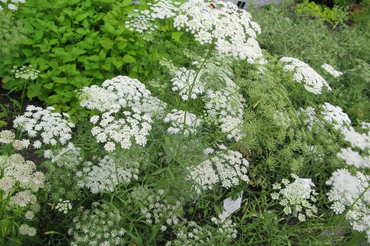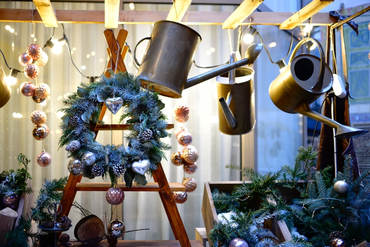
Box (Buxus sempervirens) has been a favourite of gardeners for centuries, loved for its neat, evergreen structure and its suitability for topiary and formal hedging. From the Roman era through the Tudor period and beyond, it has defined the borders of some of the world’s most iconic gardens.
But in recent years, box plants have faced major challenges. Box blight and the destructive box tree caterpillar have devastated hedges across the UK, leaving gardeners in search of hardy, low-maintenance alternatives that still deliver structure and style.
If your box hedge is past its prime or you're planning a new garden and want something more resilient, here are five outstanding alternatives to consider.
1. Privet: The Tough, Fast-Growing Hedge for Urban Gardens
A fast-growing and durable alternative, privet forms dense, leafy hedges that tolerate pollution, poor soil, and urban environments with ease. It responds well to pruning, which allows for crisp shapes and smart borders. While regular clipping prevents flowering, the trade-off is a tidy, evergreen screen that grows quickly and thrives in most conditions.
Best for: Urban gardens and fast results
Care tip: Trim in May and August to maintain form and density.
2. Yew - A Formal Favourite That’s Built to Last
Yew is a classic and versatile hedge plant that rivals box for elegance. Dense and evergreen, it responds beautifully to shaping and clipping, making it ideal for topiary. Unlike many conifers, yew can regenerate from old wood, so even overgrown plants can be rejuvenated. Its bright green new growth contrasts nicely with darker mature foliage, offering year-round interest. Yew thrives in sun or shade and tolerates most soils, provided they’re not waterlogged.
Best for: Formal gardens, topiary, and long-lasting structure
Care tip: Trim in spring and again in autumn to maintain its shape.
3. Add a Splash of Colour with Pittosporum Hedges
Pittosporums are gaining popularity for their vibrant foliage and easy care. Compact varieties like Pittosporum ‘Tom Thumb’ naturally form rounded shapes and offer rich maroon-purple leaves with striking green new growth. Another standout, Pittosporum ‘Irene Paterson’, features variegated green-and-white leaves that blush pink in colder months. Hardy in most areas except the coldest regions, pittosporums are ideal for sunny spots and light shade.
Best for: Colourful, compact hedging with visual variety
Care tip: Lightly trim once or twice a year between spring and late summer.
4. Tidy, Tough, and Affordable: Why Lonicera Makes a Great Hedge
If you’re after a box lookalike, Lonicera nitida is a top contender. It boasts small, glossy green leaves and forms a dense, tidy shrub that takes well to shaping. It’s also drought-tolerant, low-maintenance, and copes well with sun or partial shade. Varieties like ‘May Green’ offer classic green tones, while others come in silver-variegated or golden foliage.
Best for: Budget-friendly, fuss-free hedging
Care tip: Trim as needed throughout the growing season to maintain a compact shape.
5. Euonymus: Glossy Green Hedges That Thrive by the Sea
This compact, evergreen shrub delivers glossy green foliage and a slow, steady growth habit, making it ideal for low hedging. Robust and salt-tolerant, it even performs well in coastal gardens. ‘Jean Hugues’ is easy to manage and offers a clean, formal appearance reminiscent of box without the associated pest problems.
Best for: Coastal gardens and neat, low hedging
Care tip: Prune in late spring and again in early autumn if required.
Find Your Perfect Hedge
If your box hedge is on its way out, don’t despair. These five alternatives not only offer beauty and structure but are also better suited to the challenges of modern gardens. Whether you're after colour, formality, or resilience, there's an option here to suit your space.
Need help choosing? Visit Carpenters Nursery for our full range of hedging plants. Our experts are always happy to help you find the perfect fit for your garden.




